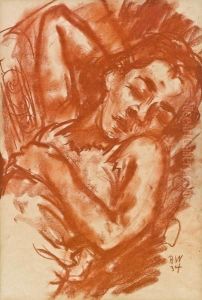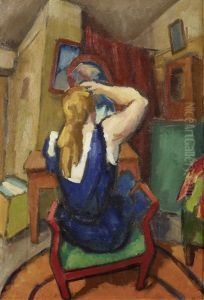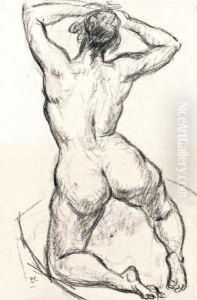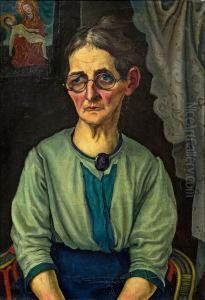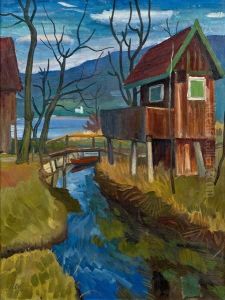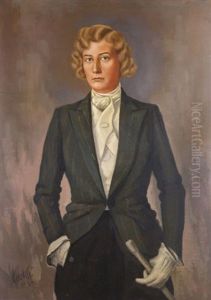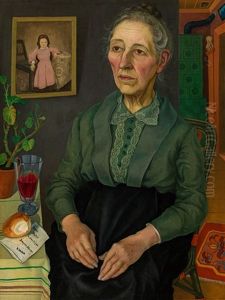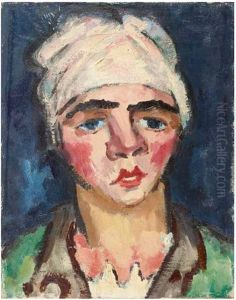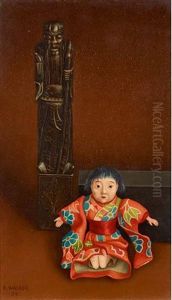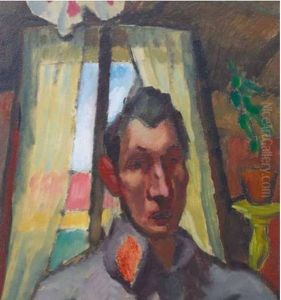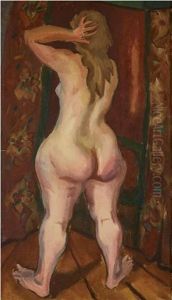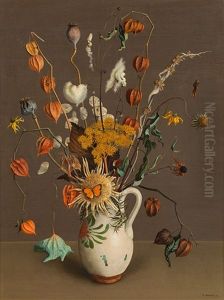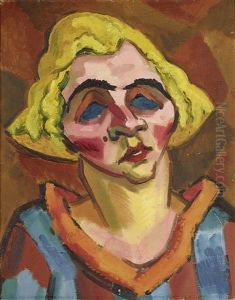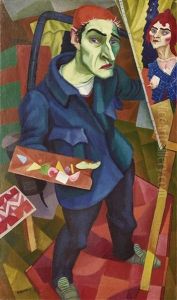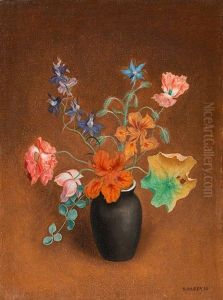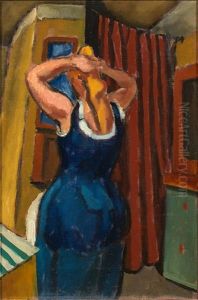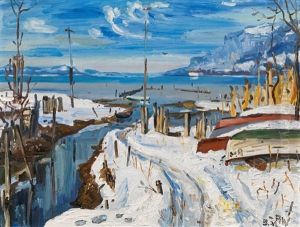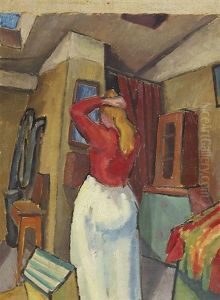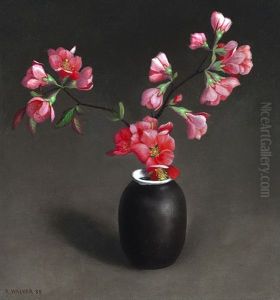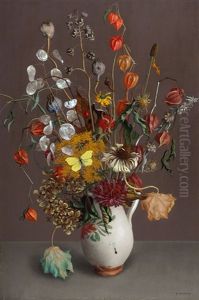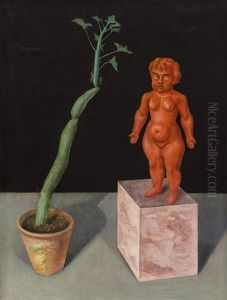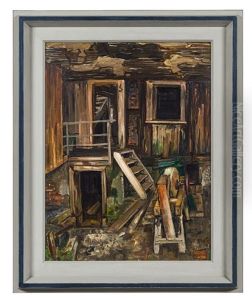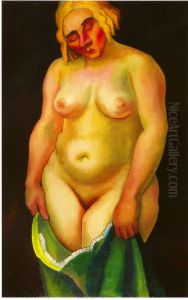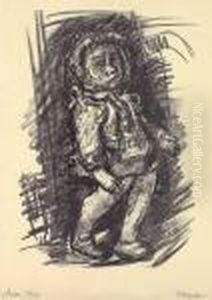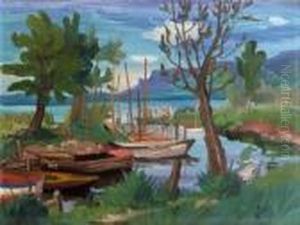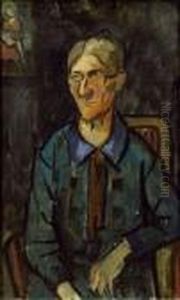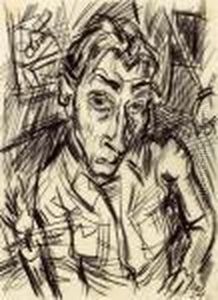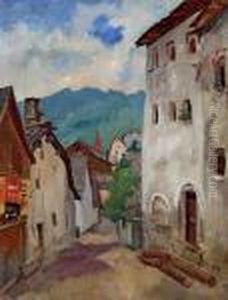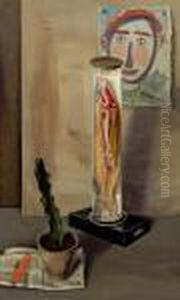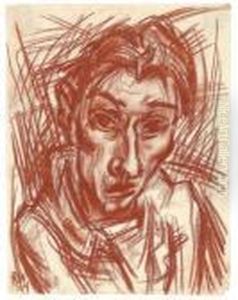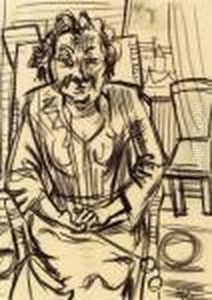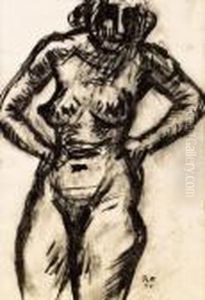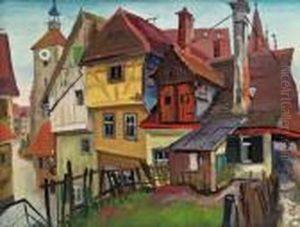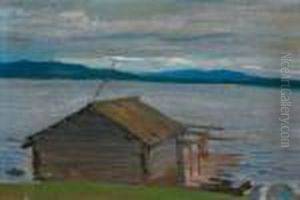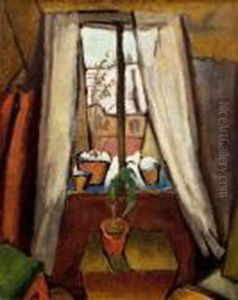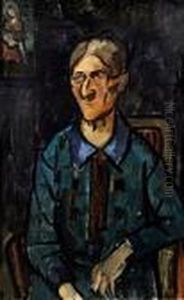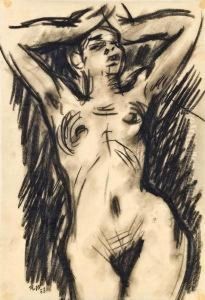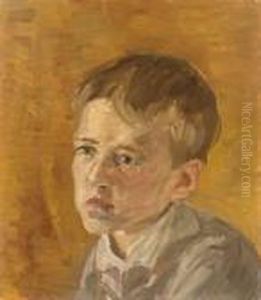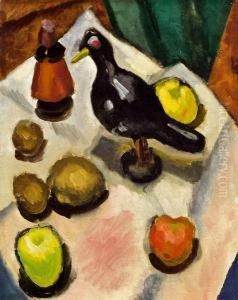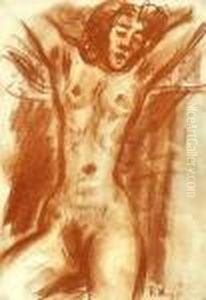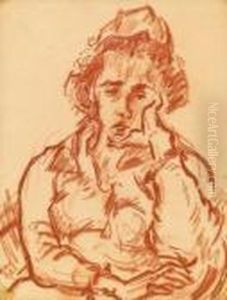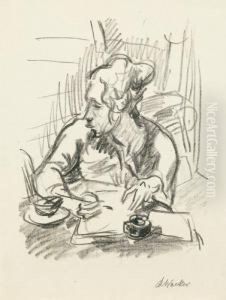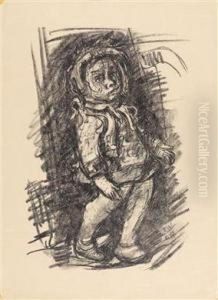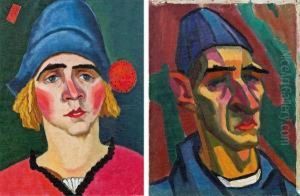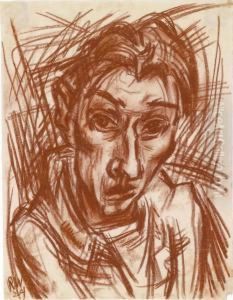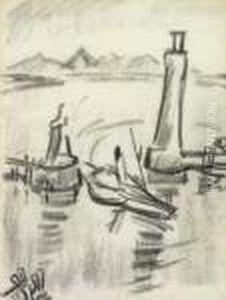Rudolf Wacker Paintings
Rudolf Wacker was an Austrian painter born on August 7, 1893, in Bregenz, Austria. He is known for his expressive contributions to New Objectivity (Neue Sachlichkeit), a movement that emerged in Germany in the 1920s as a reaction against Expressionism. Wacker's work often combined elements of realism with a poignant emotional resonance, capturing the human condition and the mundane aspects of life with a quiet intensity.
Wacker's early life was shaped by his education at the School of Arts and Crafts in Graz, followed by studies at the Vienna Academy of Fine Arts. His initial artistic style was heavily influenced by Expressionism. However, after serving in World War I, Wacker's experiences as a soldier had a profound impact on his outlook and work, leading him to adopt a more realistic approach to painting.
In the 1920s, Rudolf Wacker became associated with the New Objectivity movement, which sought to depict reality in a stark and unsentimental manner. He was particularly fascinated with still lifes, landscapes, and portraits that conveyed a sense of calm and introspection. His paintings from this period reflect a meticulous attention to detail and a subdued color palette that emphasizes the subject matter's inherent emotional weight.
Despite the growing tension and the rise of fascism in Europe, Wacker continued to focus on his art. He held several exhibitions and was active in the art community, engaging with fellow artists and intellectuals. His work during this time began to exhibit a greater sense of political awareness, subtly critiquing the social and political climate of the era.
Tragically, Rudolf Wacker's life and career were cut short by the onset of World War II. He was conscripted into the German army and died on July 7, 1939, in Brest, France, at the age of 45. Although his career spanned a relatively brief period, Wacker's body of work has left a lasting impression on Austrian art. His paintings are celebrated for their emotional depth and technical precision, and they continue to be studied and admired for their unique contribution to the New Objectivity movement and early 20th-century European modernism.
